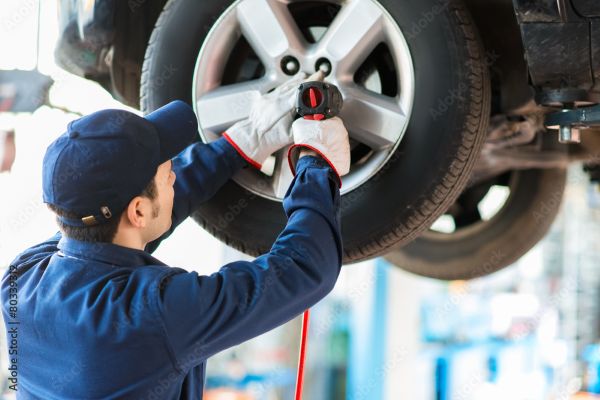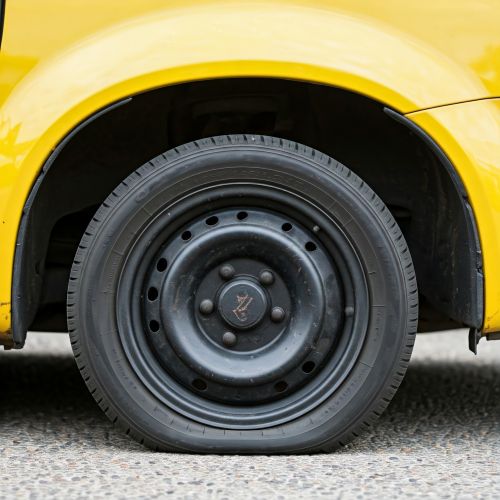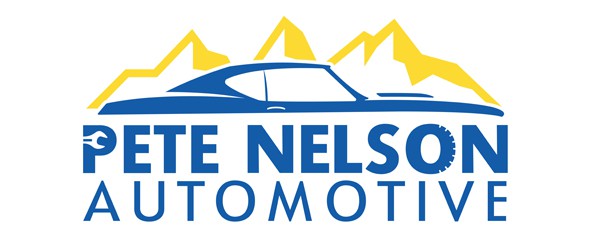
Tires are one of the most crucial components of your vehicle, directly affecting safety, performance, and fuel efficiency. Neglecting tire maintenance can reduce traction, poor handling, and even dangerous blowouts. Knowing when to replace your tires is key to ensuring a smooth and safe ride. In this post, we’ll cover the five top signs your tires need replacing and why paying attention to these indicators is essential for your safety and your wallet.
1. Tread Wear Indicators
What Are Tread Wear Indicators and Why Do They Matter?
Tread wear indicators are small, raised bars located in the grooves of your tire tread. When your tires wear down to the level of these bars, it’s a clear sign they’ve reached the end of their lifespan.
How to Check Tread Depth:
- Perform the penny test: Insert a penny into the tread groove with Lincoln’s head facing down. If you can see the top of his head, your tread depth is below 2/32” and the tire needs replacing.
- Upgrade to the quarter test for added safety. If you see the top of Washington’s head, it’s time to consider new tires.
Why It Matters:
Insufficient tread reduces traction, especially on wet roads. This increases your risk of hydroplaning and makes stopping quickly much harder. Eligible tires from major brands can improve traction and overall performance. Regular tire inspections ensure your tires remain in excellent condition for safe driving.
2. Visible Cracks or Bulges
What to Look For in Tire Sidewalls:
Examine your tire sidewalls for any visible cracks, splits, or bulges. These are often early signs of deterioration and structural damage.
Common Causes:
- Weathering: Prolonged exposure to heat, UV rays, and fluctuating temperatures.
- Age: Tires naturally degrade over time, even with minimal use.
- Improper Inflation: Over- or under-inflated tires can lead to structural weaknesses and internal damage.
Why It Matters:
Cracks or bulges compromise the structural integrity of your tire, increasing the likelihood of a blowout. Regular tire service and proper tire pressure checks help prevent these issues. Trusting experienced technicians at Pete Nelson Automotive ensures peace of mind when addressing visible tire issues.
3. Uneven Wear Patterns
What Causes Uneven Tire Wear?
- Alignment Issues: Misaligned wheels can cause certain areas of the tire to wear faster.
- Improper Inflation: Underinflated tires wear on the edges, while overinflated tires wear in the center.
- Suspension Problems: These can lead to irregular wear patterns.
How to Inspect for Uneven Wear:
Visually check your tires for areas that look more worn than others. Run your hand across the tread surface to feel for irregularities.
Why It Matters:
Uneven wear shortens the life of your tires and reduces traction. Regular tire rotations and proper maintenance can prevent this issue and save you money in the long run. Consider using a tire calculator to determine the correct size tire for your vehicle. Regular tire inspections can identify these issues early, keeping your vehicle road safe.
4. Vibration or Noise While Driving
What Causes Abnormal Vibrations or Sounds?
- Improper tire balancing
- Wheel alignment issues
- Internal tire damage or structural weaknesses
How to Recognize the Problem:
If you feel vibrations in the steering wheel or hear unusual noises, it’s time to have your tires inspected. These symptoms often indicate underlying problems like tire imbalance or suspension issues that can escalate if ignored.
Why It Matters:
Ignoring vibrations or noise can lead to uneven wear, damage to suspension components, and unsafe driving conditions. Addressing these issues early can prevent costly repairs. Services like nitrogen tire inflation and accurate tire pressure readings can further enhance performance and ensure proper tire maintenance.
 5. Age of the Tires
5. Age of the Tires
How Long Do Tires Last?
Most manufacturers recommend replacing tires every 6-10 years, regardless of tread condition. The aging process weakens the rubber, making it less reliable over time.
How to Check the Manufacturing Date:
Look for the DOT code on the tire sidewall. The last four digits represent the week and year the tire was manufactured (e.g., “3220” means the 32nd week of 2020).
Why It Matters:
Even if your tires appear to be in good shape, aged tires are more prone to blowouts and loss of traction. Replacing them proactively ensures your safety on the road. Maintaining well-maintained tires in optimal condition ensures safe driving in adverse weather conditions.
Keep Your Tires in Check for Safe Driving
Recognizing the signs that your tires need replacing is essential for maintaining safety, performance, and fuel efficiency. Worn-out tires can compromise traction, handling, and braking, putting you and others on the road at risk.
Regularly inspect your tires for these warning signs, and don’t hesitate to consult a professional if you’re unsure. At Pete Nelson Automotive, our knowledgeable staff is here to help with all your tire needs, from inspections to replacements. We offer decades of tire knowledge and expert installation for car tires, light truck tires, and all-terrain tires. Our maintenance services ensure your tires remain in excellent condition, giving you peace of mind on the road.
Contact us today at 623-974-4723 to schedule an appointment and keep your vehicle running safely and efficiently.
FAQs
Q: How often should I rotate my tires?
A: It’s recommended to rotate your tires every 5,000-7,500 miles or as specified in your vehicle’s owner manual. Regular care of tire rotations extends tire life and ensures even wear.
Q: Can I mix different tire brands on my car?
A: It’s best to use the same brand and model of tire on all four wheels for consistent performance and safety.
Q: What happens if I drive on underinflated tires?
A: Underinflated tires generate excess heat, which can lead to premature wear, poor fuel efficiency, and increased risk of a blowout. Proper tire inflation pressure is key to extending the life of your current tires.
Q: Do I need winter tires in mild climates?
A: Even in mild climates, winter tires can enhance performance and safety in colder temperatures or during occasional icy conditions. For all-season tire options, consult our tire and auto experts.
